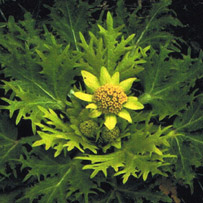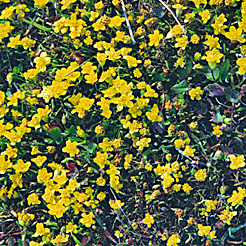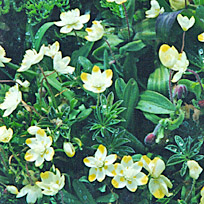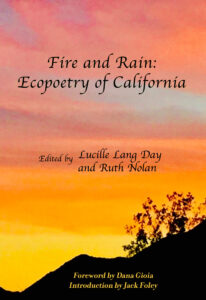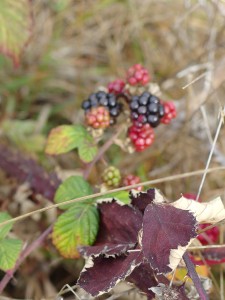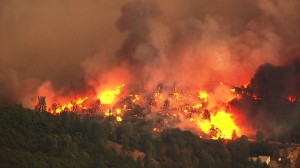Archive for the ‘wildflowers’ Category
The way we learn to belong
Once more we are at that seasonal turn familiar in California history: after a winter of great rains, floods and mudslides, the promise of an extraordinary blaze of color as wildflowers burst into bloom. My first experience of this magical transition was in 1969, my second spring in this new country. I describe it in letters to parents:
Feb. 28, 1969
It has actually stopped raining for the past hour. Another shower on the way, of course, but such a respite to see the sun. We have been averaging one sunny day a week for the past two months, and the general situation is already critical. We are not doing too badly in the Santa Clara Valley. All the creeks are contained by reservoirs up in the hills, and although the largest one, Anderson, is spilling over the top and flooding parts of east-side San José, the others are still holding their own. Fortunately the weather-man had predicted a respite for the next four or five days, i.e., drizzle instead of a deluge, and the authorities are hoping to get enough water away through the sluices of the other six dams during this time to make room for next week’s storms. Where we live is on relatively high ground anyway, so it is unlikely that we would be affected. The really big headache though is Central Valley, which drains the whole of the Sierra Nevada range. The Sacramento-San Joachim delta has flooded twice already in the past two months, and the river levels are still dangerously high. But in the high Sierra the snow fall is already twice the annual average, and we are only one third through the rainy season. Sooner or later that stuff is going to thaw, and if there is a warm rain up there, the effect will be sudden and disastrous. Meanwhile, it is still raining, with violent storms rolling in from the Pacific with tedious regularity. For some vast meteorological reason, the storm belt has swung further south than normal this year—so we are getting what Alaska usually gets. (They say it’s a mild winter in Alaska this year!)
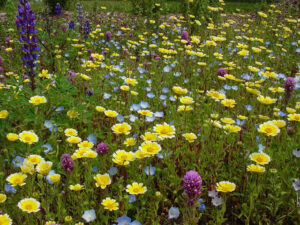
A field of mixed wildflowers: Arroyo Lupine, Baby Blue-eyes, Purple Owls Clover and Tidy-tips. Image from Mother Nature’s Backyard.
And a few weeks later:
April 14, 1969
[After a visit to the Lick Observatory on Mt. Hamilton] We decided to see what it was like on the other side of the mountain. We found ourselves in a charming little valley, the San Antonio, which we followed back to Livermore and the freeway home. The land in this part is lightly wooded, and very sparsely populated—we saw a few ranch houses, occasional small herds of cattle, the odd horseman and dog, and that’s all. And at this time of year, the earth between the trees is covered with fresh grass, so scattered and strewn with wildflowers that it looks like some magic carpet.
I think it is one of the most wonderful sights I have ever seen. Great swathes of colour, of every shade. One they call Sunshine, or Goldfields, a tiny daisy-like flower, brilliant yellow. It grows only a few inches high, but in such profusion that, as its name implies, it makes a great field of colour. And on the slopes of Mt. Hamilton we thought for a while the snow was still lying, there were such patches of a snowy white flower. But other colours too, pinks and blues right through to the purples and reds. And down in the lower valleys, the California poppy, a brilliant orange. …I love these flowers so much.
An interviewer recently asked me what moved me toward writing about nature. I replied that as an immigrant, learning about the land was a big part of learning to belong to my adopted country. I’ve found this be particularly true when I moved from the Bay Area to the Mendocino coast. I’ll always be grateful to Dr. Teresa Sholars, whose College of the Redwoods wildflower identification class gave me the names of beloved beauties. Here’s a poem about them:
California Wildflowers
It seems a simple joy
to greet the flowers by name
Tidy Tips, Goldfields, Blue-Eyed Grass,
Crane’s Bill and Cream Cup,
Sticky Monkey Flower,
Mule’s Ears, Owl’s Clover,
Sun Cups glossy by the path,
Milkmaids in shade,
Lupine and Poppy on the slope,
but to the immigrant who after 40 years
still speaks with foreign intonation,
these are pet-names for familiars
precious as friends,
who speak in a language without words
of soils: clay and serpentine,
of rains and drought,
the way the lineaments of the land
impress themselves,
the way we learn to belong.
In a couple of days I’m off to Portland, OR for the Associated Writing Programs (AWP) conference. I was invited to be part of a group representing Scarlet Tanager Books, publisher of the anthology Fire & Rain: Ecopoetry of California, in which I have several poems. We’re hosting a reception at the conference, and doing a reading at a neighboring bookstore. Being recognized as an “ecopoet of California” makes me feel that, after what is now 52 years, this beautiful state is home. Enjoy this season’s flowers.
The red stain of near disaster
Whenever I see old blackberry canes, dark red as the stain of their summer juice, I remember blackberrying in England when my son was small, and a dark red guilt sweeps over me. I described our expedition in a letter to parents:
8 Oct 1965
We went blackberrying on St. Ann’s Hill, not far from here. Got a lovely lot—have been busy making jelly, pies, etc. David had a wonderful time—it was so sweet to see the solemn single-mindedness with which he set about collecting his berries—and he didn’t eat a single one until Tony offered him a handful—to comfort him when he tumbled down a slope into a patch of brambles.
Modern American parents would probably be horrified at how lackadaisical we young mothers in England were about supervising our children’s play. Once the daddies were gone to work, our little close of twenty-eight row houses was almost completely free of traffic. The kids, twenty of them under school age, ran in and out of each others’ houses and romped together across the grassy front yards.
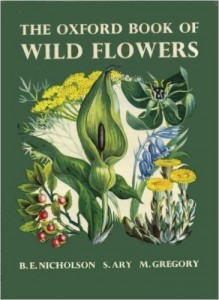 The Monday after our blackberrying expedition, I went out to gather up two-year-old David for lunch. I found him and his little friend in a still-rough corner between the housing blocks. His mouth was stained red. “I picking blackberries, Mummy,” he announced cheerfully. I took one look at the berry-laden plant, then rushed back to the house. My Oxford Book of Wild Flowers confirmed my guess: Deadly Nightshade.
The Monday after our blackberrying expedition, I went out to gather up two-year-old David for lunch. I found him and his little friend in a still-rough corner between the housing blocks. His mouth was stained red. “I picking blackberries, Mummy,” he announced cheerfully. I took one look at the berry-laden plant, then rushed back to the house. My Oxford Book of Wild Flowers confirmed my guess: Deadly Nightshade.
While Tony, who had come home from work for lunch, went to tell the mother of the other child what had happened, I tried everything I knew of to make our baby throw up. Nothing worked. We called an ambulance. Since I was within a week or two of giving birth to our second child, a neighbor, seeing the ambulance, came over to wish us well. I am still grateful that when she learned the story, she called the police, and still guilty it hadn’t occurred to me that other children might be involved. Some days later I wrote to parents:
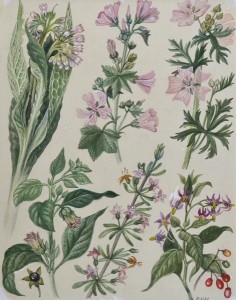
Watercolor illustration by Barbara Nicholson in The Oxford Book of Wildflowers, Oxford University Press, 1960. Shown are: Comfrey, Common Mallow, Musk Mallow, Deadly Nightshade, Duke Of Argyll’s Tea Plant, and Woody Nightshade.
13 Oct. 1965
The police organised all the rest of the kids in the close whose parents couldn’t prove they were somewhere else that morning into another convoy of ambulances for a mass stomach pumping session. About a dozen altogether involved, of which four (including David) were confirmed cases, though they decided to keep the whole lot overnight for observation, just in case.
Meanwhile the newspapers had got hold of the story. We refused to see them at the hospital, but when we got home about 7:00—completely exhausted, & having had nothing to eat since breakfast—we were invaded by a posse of reporters. A highly garbled & exaggerated account appeared the next day. I suppose it’s not every day one makes the front page of the Daily Mail, the Daily Mirror, & the BBC News, but I shouldn’t care for the honour to happen again.
Anyway, the story ended well—all the kids were discharged the next morning, with none but the hospital staff any the worse for wear—in fact the sister-in-charge of the children’s ward where the confirmed cases were confessed that she hadn’t known that four such tiny boys could get so involved in riots and punch-ups all up and down the ward, and they were very pleased to see the back of them.
A cool way to help restore a forest
In neighboring Lake County this past summer, wildfire destroyed 76,000 acres of forest (about seven million trees) and nearly 2000 homes, businesses and other structures. Mendocino Coast Botanical Gardens has stepped up with their Lake County Giving Project. One component of the project encouraged people to purchase potted trees and other plants for their holiday decorations, then bring them back to be donated to Lake County residents rebuilding their homes.
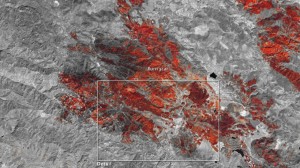
Zoomed-in false-color shortwave infrared satellite image showing the Valley Fire burn scar near Middletown, California on September 20, 2015. Burned areas appear orange or dark red. (NASA Earth Observatory)
The other component of the Giving Project is seed balls. With advice on plant species from the USDA Resource Restoration Project and the Natural Resources Conservation Service, Wild Jules is crafting seed balls of wild grasses, perennials, and annual wildflowers for habitat restoration in the fire-ravaged areas. According to the Wild Jules website, “Individual varieties of seed are proportionately mixed with red clay and compost to provide a self contained method of spreading native varieties. The ball protects the seed from birds and rodents. The seed cannot dry out or blow away. The best part is, you can cast these ‘jules’ (jewels) out on top of the soil any time of year. The seed within the clay balls will wait patiently to germinate until adequate water is applied by way of rain or irrigation.”
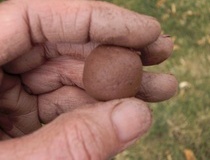
A Wild Jules seed ball. The balls being prepared for Lake County habitat restoration are a little more flattened so that they stay put on steep hillsides.
Tony and I were intrigued enough to stop by the Garden Store to donate a few dollars to the seed ball purchase fund.
Julie Kelly, founder of Wild Jules, says: “It’ll take many years but every bit counts. The perennials won’t bloom this year, but the annuals will. They will help feed foraging insects and birds and lift the spirits of the folks so terribly impacted.”
Blennosperma
In this unseasonably gorgeous January weather, I started thinking about wildflowers. This morning I took a walk at Glass Beach to look for Blennosperma. Sure enough, they’re up. Not yet the carpet of gold, but a few bright yellow stars dot the green of our coastal prairie, the uplifted strip of land at the edge of the cliffs. Like many of the California wildflowers we amateur flower seekers call “little yellow jobs,” the Blennosperma flower is daisy-like and shiny. Our variety, Blennosperma nanum var. robustum, is on the Endangered Species list. It grows only on the Glass Beach Headlands and at Point Reyes.
Glass Beach, now part of MacKerricher State Park, is a popular place to walk. There is talk of putting a cycling trail through it. Seeing those early flowers, I realize again that we’re in danger of loving this place to death. I try to be careful where I walk.
Where the flowers are
It is one thing to know as a fact that high rainfall tallies in California’s rainy season result in more spring wildflowers. It is quite another thing to feel with your whole being that exuberant burst of fecundity.
At MacKerricher State Park this morning the air is misty and the sea is calm. Out by Laguna Point, swathes of Goldfields (Lasthenia chrysotoma) dazzle the eye. Up close, I see that among the Goldfields are patches of Purple Butter & Eggs (Triphysaria eriantha ssp. rosea) whose complementary color makes the gold even more eye-popping. Scattered among them are California Poppies (Eschscholzia californica). Not the orange poppies we coast dwellers snobbishly refer to as freeway poppies, but our own coastal variety, the leaves more fleshy to resist the salt wind, the flowers a prettier yellow.
South along the headlands trail, I know a place where Coast Delphinium (Delphinium decorum) grows. Never more than a foot high, each plant has a head of deep blue flowers that glow with intensity. This year they are magnificent. As I crouch to admire, I remember renewing their acquaintance in previous springs.
This is the way an immigrant learns to belong: to come back and back to a place, to remember its varied moods, to remember where the flowers are.
Joyful for Salamanders
A Sunday afternoon walk with friends up Fern Canyon in Van Damme State Park. The creek is running fast and high, the trail is squelchy. Signs of early spring growth: stream violets, trilliums and redwood sorrel in flower, green tips to the elderberry and salmonberry. Downed wood from last week’s storm.
Wendy and I, who have lagged behind, notice a young woman squatting by a log at the side of the trail. She rolls it over.
“Found anything interesting?” Wendy asks.
“Salamanders,” says a young man at my elbow. “Six different species so far.” He holds out a cupped hand. “Ensatina eschsoltzi.” His voice floods with love for the bulbous creature on his palm, shiny gray-brown above, with pale orange underparts.
“Here’s a lovely big Slender,” calls a girl at another chunk of log. Everyone crowds around to admire her tightly curled prize.
The quartet of young people are biology students from UC Davis. “Only I had to stop out,” says the young man. “Funding ran out. But I’ll be back by summer.”
The Fern Canyon trail is blocked a mile or two up by downed trees not yet cleared. The trailhead restrooms are closed for lack of state funding. We could feel discouraged and depressed about California’s economic chaos. But the enthusiasm of these young people we met, their joy in their quest for knowledge, gives reason for hope.
Spring Slinks In
Here on the Mendocino Coast, where winters are mild and rainy, now is the time to look for the first wildflower, Scoliopus bigelovii, commonly known as Slink Pod. The shady bank down by our creek, where I usually see them, was littered today with debris where the top of an old fir had fallen, but there was still one plant unsmushed by the crash, a new bud opening, and spent flower heads already slinking off to find new earth for their seeds.
